Description of onion nematode and control measures
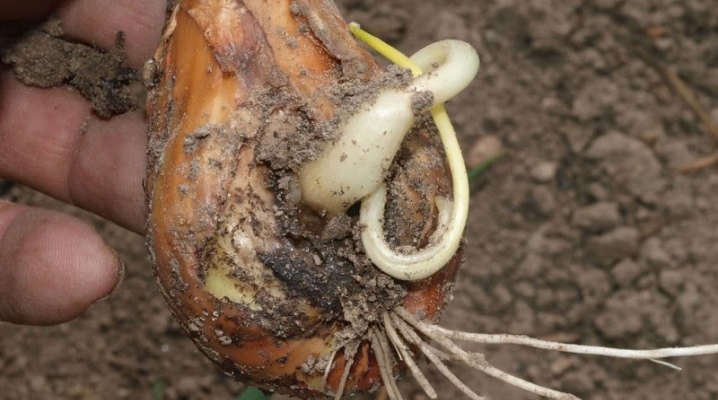
This parasitic worm is capable of destroying up to 80-100% of the crop. His cunning lies in fertility, gluttony and the ability to fall into suspended animation for up to 5 years. We are talking about the onion nematode. Read more about what kind of pest it is, how to determine the damage to the plant and how to get rid of the onion nematode - in the article.


Description
The onion nematode is a small worm that is a pest, belongs to the type of roundworm (Latin Nematoda). Roundworms are a large group of parasites. The onion variety has been controversial for a long time. Today, scientists agree that the onion stem nematode and the potato nematode are different species, since their nutrient medium is different. The pest infects onion roots, causing the death of the plant. After damage, the bulbs become unusable, and due to their damage, the risk of other diseases increases.
The nematoda is a white worm, the length of which is only 1.5-2 cm (larvae - 0.5 cm). Outwardly, the worm looks like a piece of thread, at one end of which there is a point. This is the so-called stylet, with which the pest pierces the root crop. The nematoda feeds on the juice and tender pulp of the onion, and then lays eggs in the root crop. During the season, the female is able to lay hundreds of eggs; under good weather conditions, up to 6 generations of larvae can appear over the summer. The worm lays an average of 10 eggs daily. And the life cycle of an adult can reach 75 days.
The larvae are immediately taken for the defeat of the culture, and the reproduction of nematodes inside the bulb does not stop even after the onion is harvested. Like many worms, the onion nematode is a migratory pest. Moving from place to place, it can destroy the entire crop; the parasite is especially widespread in temperate regions.
The worm is very mobile, it can travel up to 2 meters, moving from the lower layers of the soil to the surface.
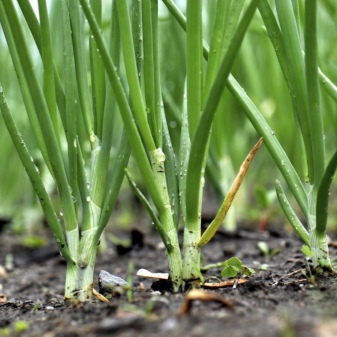

After the nematode has laid eggs, larvae emerge from them - this is the first molt. The larva remains in the bulb, feeding on the tissues and sap of the plant. Before the larva becomes sexually mature, it goes through 4 molts. This lasts for a month and a half, after which the worm mates and the reproduction of the population continues. The life cycle of an insect takes 4-8 weeks, during this period it leaves hundreds of eggs, from which new nematodes appear. The spread of the pest proceeds at a cosmic speed, which is why it is often a question of the complete destruction of the crop.
The parasite feels most comfortable in a moderately humid climate at a temperature of + 15-20 ° C. If the temperature drops below, the worm can fall into anabiotic state, in which it remains viable for up to 5 years. In soil without food, nematodes can remain viable for up to one and a half months, in dry residues of vegetation - up to 1 year. During the study, it was found that when the temperature drops to -80 ° C, the nematodes remain viable for another 20 minutes. That is why they survive even severe frosts.
It is important to understand that the "home" for the pest is the tissues of the root crop, and the soil is only an intermediate medium. One bulb can contain up to 15 thousand individuals. The insidiousness of worms is also in the fact that eating onion juice and tissues, pests produce a special enzyme. Worms need it to digest the root vegetable, while this enzyme is destructive for bulbs.It inhibits growth, after which the plant begins to die. Nematodes do not feed and do not choose weak and diseased plants for laying larvae. Moreover, as soon as the bulb begins to deteriorate and its growth slows down, the nematodes move to healthy plants.
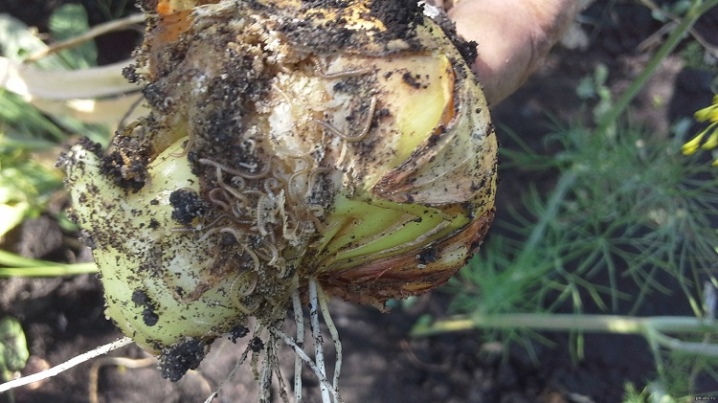
Signs of illness
Already at the initial stages of infection, it can be understood that the onion has been hit by a pest. Signs of infection depend on what type of worms (two-layer or three-layer nematode) attacked the plant, at what point in the growth of the onion this happened. In general, these are the following symptoms:
- underdeveloped stems and leaves, they practically do not grow;
- rotten root crops, loose;
- foliage dries, despite watering, turns yellow, curls up;
- the bulb begins to crack, the husk begins to fall off;
- the bottom of the root vegetable softens and then falls off.
One of the first signs of infection is a swollen first leaf. The older the plant becomes, the more pronounced this defect. Whitish spots on the bulbs can also be found at this stage. The "petals" of the bulb thicken, cavities appear between them, and the color of the pulp changes from snow-white to gray. Root crops acquire a putrid smell, become smaller. By the way, an unpleasant smell of rot can appear during watering, as well as after rain. The bulb nematode also affects seed and seeds.
If the seeds of the bulb are affected, then the seedlings may not appear. Either germination slows down, as does the development of the plant in general.
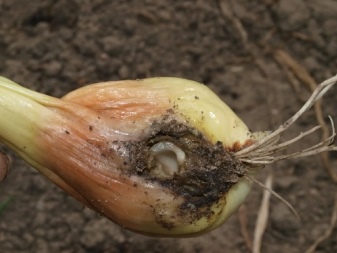

Control measures
Due to the peculiarities of the worm's vital activity (active reproduction, the ability to fall into prolonged suspended animation), the fight against it should be carried out in a comprehensive manner, prevention plays an important role. It is important to understand that the risk of damage to onions persists even after harvest, during storage.
Folk remedies
Folk remedies can be effective in the early stages of infection. In addition, you will have to use them more often.
- First of all, you need to take care of the quality of the planting material - it is recommended to soak the seeds or seedlings in water with a temperature of + 45 ° C. The soaking time is 1 hour. You can use dry wood ash by placing the seed in it for a couple of hours. Then remove and dry well.
- 10 hours before planting the bulbs in the soil, you can warm them up in warm water, while the temperature should not exceed + 45 ° C. Afterwards, dry them thoroughly. Finally, the day before planting, you can soak the seeds in a solution of potassium permanganate or 1% saline solution.
- At the first symptoms of infection, the beds can be “powdered” with tobacco dust or sprayed with infusion of tomato or potato tops. To do this, 1 kg of tops is soaked in 5 liters of water, insisted, filtered, used for watering the beds.
- The infusion can be made from nasturtium or marigolds. It will take 500-600 grams of the plant per 5 liters of water. The liquid should be infused for a day. Water it every 3-4 days.
- A simple way to destroy the worms on the surface of the bulb is to carefully remove it from the ground and immerse it in hot water for 5-7 minutes. Water temperature - no more than + 50-55 ° C. During the processing of root crops, you can disinfect the soil, and then re-immerse the bulbs in the ground.
- Mustard is another way to kill a nematode. 5 liters of water will require 100-150 g of dry mustard. The powder is diluted in warm water so that there are no lumps. This liquid is poured over onions.
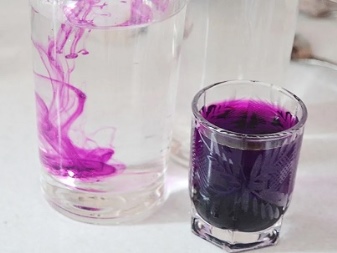
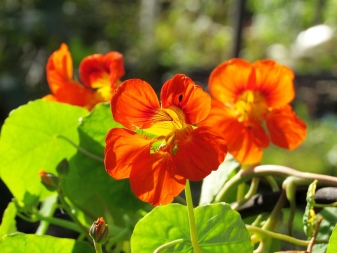
Chemicals
The acid-containing preparation percalcite has a proven efficiency and confidence of experienced gardeners in the fight against nematodes. One of the advantages of the product is the ability to poison garden nematodes at all stages of their life (adults, larvae, cysts with eggs). The drug is used in dry weather, spreading it over the surface of the beds a week before planting. Consumption - 250-300 g / m². You can also add urea (100 g / m²) 3-4 weeks before sowing. Less commonly, they resort to the use of ammonia water. A side effect will be an increase in the nitrogen content in the soil.The consumption of this product is 250 g / m².
Biological preparations can also be called quite effective. These are "Nematofagin" and "Nemagon". The first is a fungus that destroys worms and enhances the protective properties of the soil. Safe for people and animals. The second tool is suitable when it is necessary to process a large area. Among the drugs recommended by experienced gardeners, methyl bromide can also be distinguished (like Nemagon affects the respiratory tract of the parasite), Karbofos, Phosphamide (toxins penetrate the skin of worms, affecting the nervous system). With the help of chemicals, solutions are prepared for irrigating the plant, the procedure is carried out on a dry cloudy day (either in the morning or in the evening, while the sun is not too active).
It is important to strictly follow the instructions for the drug. To completely remove the nematodes, the procedure will have to be repeated 2-3 times.
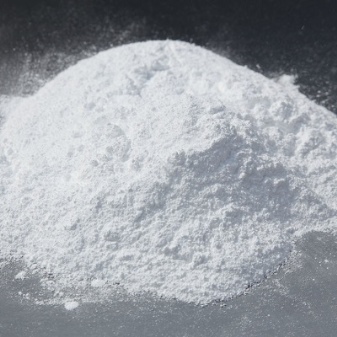
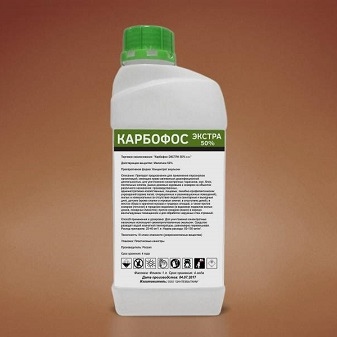
Prevention methods
In most cases, when it comes to the attack of plants by pests or diseases, it is more profitable and easier to carry out prevention than treatment. The case of damage to bulbs by nematodes is no exception. Given the activity and gluttony of worms, it is not easy to fight them. But prevention will help save the harvest.
Prevention measures are quite simple.
- Rotate the location of the crop beds annually. This not only reduces the risk of contamination, but also has a beneficial effect on the quality of the soil.
- Fertilization with manure and other fertilizers, depending on the needs of the soil - heavy, moist soils and the presence of a nutrient medium become an ideal environment for the development of nematodes.
- Sowing material must be pre-processed using heating or chemicals intended for this.
- Regular manual weeding of the beds and the area next to them - weeds can become a temporary "haven" for worms.
- Conduct regular disinfection of garden tools.
- After collecting the onions, you should carefully clean up the area: collect and take out the tops, dig up the beds, improve the quality of the soil with the help of inorganic fertilizers.
- Experienced gardeners recommend watering the ground with onion water 2 weeks before planting onions. This allows you to wake up the nematodes and make them come out of suspended animation. However, due to the lack of food, the worms will die.
- Crop rotation involves planting onions in the same place only after 5 years. It is not recommended to choose lowlands for the organization of beds - there will be higher humidity, and therefore the risk of worms. With increased acidity of the soil, you can fertilize the bed with peat. In loose, non-acidified soils, parasites usually cannot be found.
- Marigolds or nasturtium can be planted along the perimeter or next to the garden bed. The sap of these plants repels nematodes.
If nematodes have already appeared on the site once, experts recommend in the future to choose onion varieties that are more resistant to the appearance of worms. Among them is Bamberger.
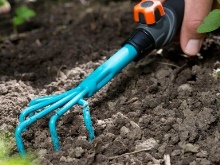
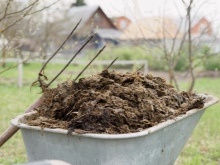
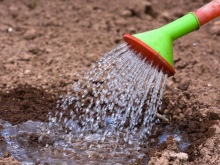
In the next video, you will find three ways to get rid of a nematode.













The comment was sent successfully.